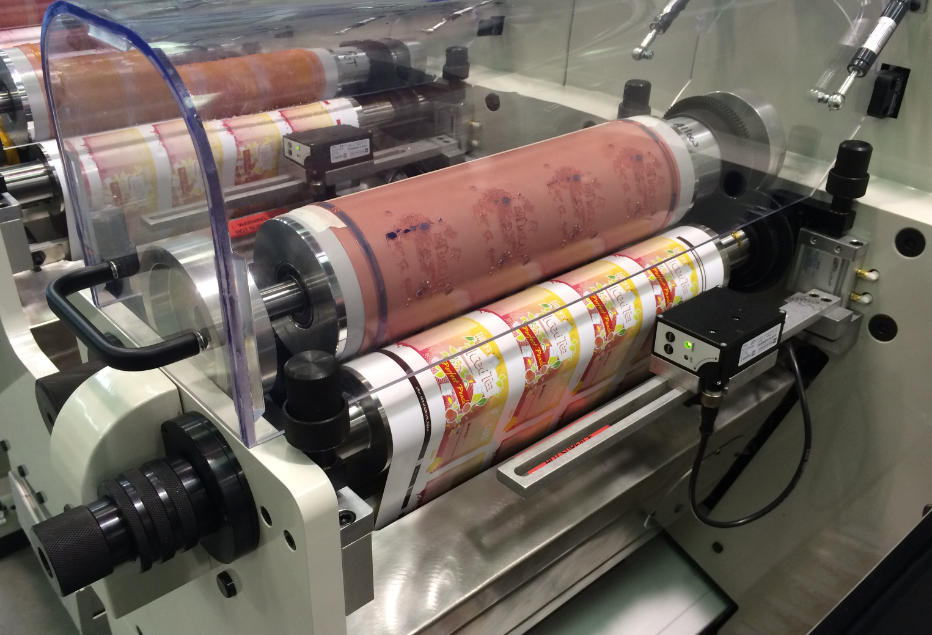A important issue in profitably running a flexographic press is keeping the quantity of material waste to a minimum. An great suggests of decreasing waste on a standard flexo press, especially when printing on high priced substrates, is to use a servo infeed and re-register. An perfect program will bring the print job in register in 1 length of the press, the absolute minimum of any press. With each stop and commence of the press a servo upgrade saves substrate and saves money. When printing on high-priced substrate such as BOPP (bi-axially oriented polypropylene) films the servo program will maintain the job in register regardless of the standard stretching and shrinking that requires location when printing on films. The job will require fewer stops for adjustments as nicely. The sum total material waste saved could come to as a lot as a quarter of all the material on a roll.
BOPP Films
BOPP films are made for versatile packaging and labels. This polypropylene product is inert and hence not impacted by most typical chemical agents. BOPP films are non-toxic and can be recycled. These options along with high tensile strength, clarity, and resistance to water passage make it popular. For the flexo printer a key factor is the printability of BOPP films. They can also be treated to make them far more sealable and better barriers working with acrylic and PVDC coatings. In quick this is a good material for packaging and labels. Having said that, it is also somewhat high-priced.

A current search of the world-wide-web for listed prices for BOPP film shows that 2.6 mil white BOPP TC is selling for .400 per MSI. A 6 ¼ inch roll, 7,800 feet long currently sells for $234 plus shipping and taxes. For the sake of the following calculations for printing we will only take into consideration the material price of $234 a roll.
Savings Example
The length of material in a twelve colour press is 200 feet. Besides the initial begin the press will be stopped twice to rewind and get rid of printed material. It will be stopped twice for adjustments. Assuming that labels are getting created, two stops will be expected in addition to remove waste matrix. アニロックスロール will come to 1 + 2 + 2+ two = 7 starts of the press.
We will assume that it takes two lengths of the press to get the web in register with every start off. This will quantity to 400 feet of waste material with each and every of seven press begins or 2,800 feet out of a 7,800 foot roll. That amounts to a material loss 35.9% or $84 on a $234 roll of BOPP.
In comparison the Servo 3000 addition to a common flexo press will bring the press into register in a single press length, or 200 feet in this example. Initial let us assume the exact same number of press begins, 7. The material waste will be 7 starts x 200 feet = 1,400 feet. This is 18% or $42 a roll of BOPP. Now let’s contemplate that the servo infeed on the Servo 3000 incredibly precisely follows the press with .0025″ resolution at complete press speed. This normally signifies fewer or no motives to stop the press. That being the case we take away two press stops for adjustments from the equation and we have 1 + 2 + 2 = five press stops resulting in 200 feet of waste per cease. This comes out to 1000 feet of waste or 12.82% of the roll at a expense of $30.
This is the distinction involving utilizing a standard press to run this job and using a Servo 3000 assisted press. Employing the Servo 3000 reduces the waste of substrate per quit and reduces the quantity of occasions the operator demands to quit the press. In this example we see a savings of $84 – $30 = $54 on a $234 roll of BOPP substrate, just under a quarter of the expense of the roll.
Check Out a Savings Calculator
This example only looks at savings on substrate. Just about every time a press is stopped it is not producing income regardless of the fact that overhead continues. To definitely see what adding a servo will save, the printer wants to adhere to this link and use the savings calculator. That will show the savings on both substrate and overhead with the use of a servo unit and infeed method upgrade for a regular flexographic press.

